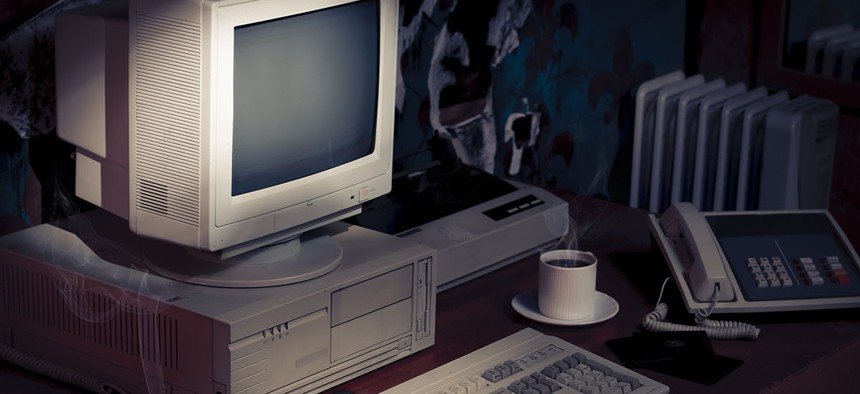Trump Said Government Has One 40-Year-Old IT System. It Actually Has At Least 10.

Fer Gregory/Shutterstock.com
The federal sector's technology problem is worse than the president's thinks.
In a meeting with prominent business executives Tuesday, President Donald Trump lamented the poor state of federal IT, telling CEOs, “We have a computer system in this country that’s 40 years old.”
Actually, Mr. President, we have at least 10 such systems—and they’re critical to U.S. civilian and military operations.
The U.S. nuclear arsenal is coordinated by the 54-year-old Strategic Automated Command and Control System, run on 1970s-era IBM mainframes that still use 8-inch floppy disks. President John F. Kennedy held your position when these systems were designed.
If that’s a scary thought, here’s something even more sobering: Two of the Treasury Department’s tax systems are even older. Collectively, the 57-year-old Individual Master File and Individual Business File house tax data for more than 100 million Americans, and they’re running on “low-level computer code” that predate the NASA moon landing by a decade.
Your promise to improve veteran care is an important one, but it won’t be easy. The Veterans Affairs Department's back-end system for tracking benefit claims is 52 years old, and its time-and-attendance tracking software will turn 54 this year.
Here’s a list of the 10 oldest critical IT systems in government, based on research from Congress and the Government Accountability Office, originally reported by Nextgov's Jack Moore:
1
2
3
4
5
6
7
8
9
10
The point is, the government’s technology problem is worse than you think. Approximately 80 percent of the $90 billion federal IT budget goes toward outdated, legacy IT systems, leaving little cash for the development of new technologies commonplace in the private sector.
Your newly created Office of American Innovation would be wise to reach out for solutions to both industry and Congress, as improving the way government buys and runs IT is one of the few things both political parties agree on at the moment. Bipartisan legislation that would have addressed the government’s tech challenges called the Modernizing Government Technology Act passed the House last September, but stalled in the Senate during the lame-duck session.
Editor's note: This article was updated to correct the name of the Business Master File.
Rep. Will Hurd, R-Texas, and Democratic counterparts including Rep. Gerry Connolly, D-Va., are expected to put forth similar legislation in the coming weeks. These glaring examples of the outdated technology that underpin federal systems highlight the problem, but the pieces are also in place for you to lead the way in fixing them.
NEXT STORY: Can 911 get with the times?






